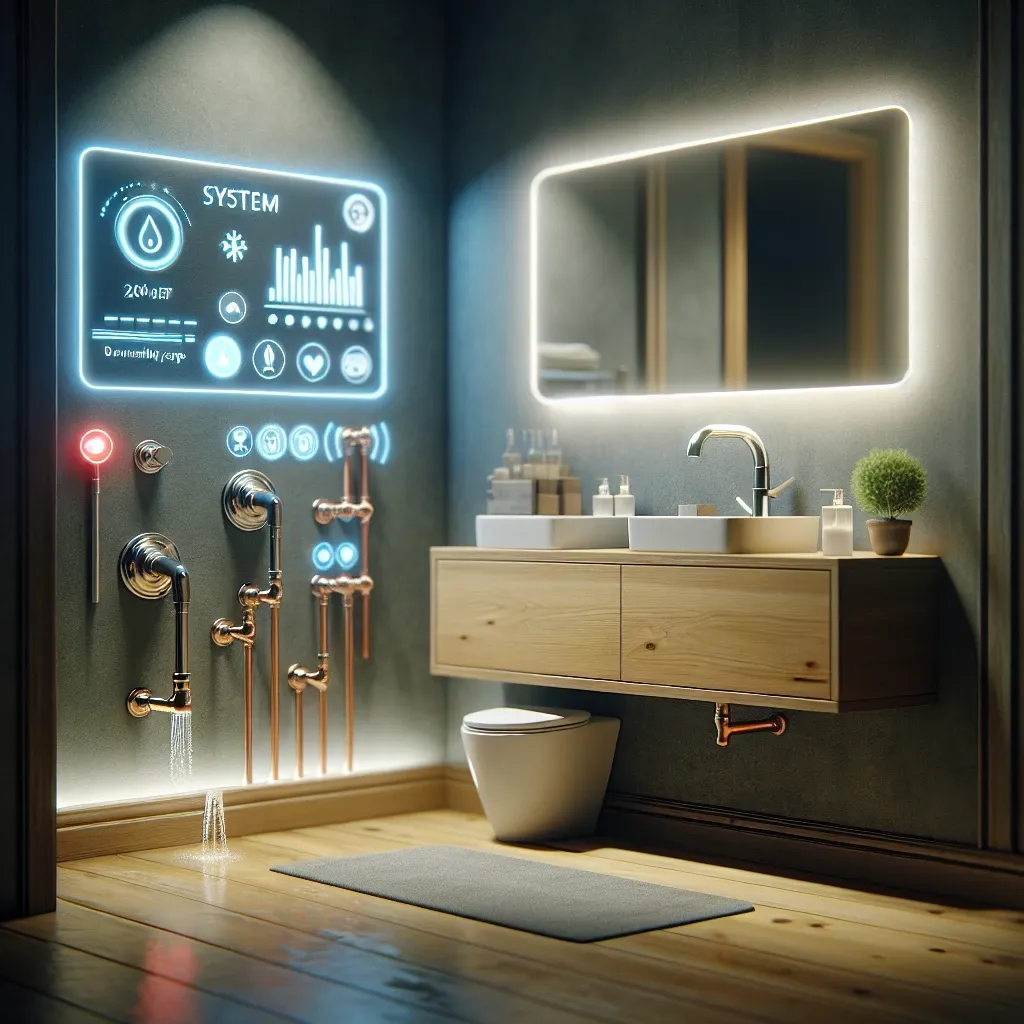Introduction to Smart Plumbing
In today’s fast-paced world, technology continues to revolutionize the way we live and manage our households. One area that has seen significant advancements is plumbing. Smart plumbing systems are now capable of detecting leaks in real-time and automatically shutting off the water supply to prevent damage. This article delves into the intricacies of smart plumbing, exploring its benefits, functionalities, and future potential.
Understanding the Mechanism of Smart Plumbing
Smart plumbing systems utilize a combination of sensors and advanced technology to monitor the flow of water throughout a building. These systems can be integrated into existing plumbing infrastructures or installed as part of new construction. The key components of a smart plumbing system include:
- Leak Detection Sensors: These sensors are strategically placed throughout the plumbing system to identify any unexpected water flow, indicating a potential leak.
- Automated Shut-Off Valves: Once a leak is detected, these valves can automatically close to stop the flow of water, minimizing damage.
- Mobile Applications: Many smart plumbing systems come with user-friendly apps that allow homeowners to monitor their water usage, receive alerts, and control their plumbing remotely.
The Importance of Leak Detection
Water leaks can lead to significant damage if not addressed promptly. Here are some reasons why leak detection is critical:
- Preventing Water Damage: Leaks can cause structural damage to walls, floors, and foundations, leading to costly repairs.
- Conserving Water: Leaks waste a considerable amount of water, which can contribute to higher utility bills and environmental issues.
- Health Risks: Undetected leaks can create a moist environment that fosters mold growth, posing health risks to inhabitants.
How Smart Plumbing Systems Work
Smart plumbing systems operate through a network of sensors and devices. Here’s a step-by-step guide on how these systems function:
Step 1: Installation
The initial step involves the installation of leak detection sensors and automated shut-off valves at strategic points in the plumbing system. This installation can be completed by a professional plumber or as a DIY project, depending on the complexity.
Step 2: Continuous Monitoring
Once installed, the sensors continuously monitor water flow and pressure. If they detect a flow that exceeds normal parameters—indicating a leak—they transmit alerts to the connected mobile device.
Step 3: Automatic Response
Upon receiving a leak alert, the system can automatically signal the shut-off valve to close, stopping the water flow immediately and preventing further damage.
Step 4: User Notification
Homeowners receive notifications on their smartphones, allowing them to take further action if necessary. The app may also provide insights into the location of the leak and suggestions for repair.
Pros and Cons of Smart Plumbing
Pros
- Real-Time Monitoring: Provides instant alerts and monitoring, allowing for quick responses to potential issues.
- Cost Savings: Reduces the risk of expensive water damage and lowers water bills by detecting leaks early.
- Convenience: Remote access through mobile applications enables homeowners to manage their plumbing systems from anywhere.
Cons
- Initial Cost: The installation of smart plumbing systems can be expensive upfront.
- Dependence on Technology: Systems may fail or malfunction, leading to potential issues if not properly maintained.
- Complexity: Some users may find the technology intimidating or challenging to operate.
Future of Smart Plumbing
The future of smart plumbing looks promising as technology continues to advance. Here are some predictions:
- Integration with Home Automation: Smart plumbing will increasingly integrate with other home automation systems, allowing for seamless control of all household functions.
- Increased Data Analytics: Future systems may provide more in-depth analytics of water usage and efficiency, enabling homeowners to make informed decisions.
- Improved Reliability: As technology evolves, we can expect more reliable sensors and systems that reduce the occurrence of false alarms.
Real-World Applications of Smart Plumbing
Smart plumbing systems are already being implemented in various settings:
- Residential Homes: Homeowners are increasingly adopting smart plumbing solutions to enhance their water management.
- Commercial Buildings: Businesses are using smart plumbing to reduce operational costs and prevent water damage.
- Municipal Applications: Cities are exploring smart plumbing technologies to monitor and manage water infrastructure more effectively.
Conclusion
Smart plumbing represents a significant leap forward in water management technology, offering solutions that not only detect leaks but also help conserve resources. As these systems become more prevalent, homeowners and businesses can enjoy greater peace of mind knowing they are protected from the potentially devastating effects of leaks. Investing in smart plumbing is not just a trend; it’s a practical step towards a more efficient and sustainable future.
Call to Action
Are you ready to protect your home from water damage? Consider upgrading to a smart plumbing system today and experience the benefits of real-time leak detection and automatic shut-off capabilities.

